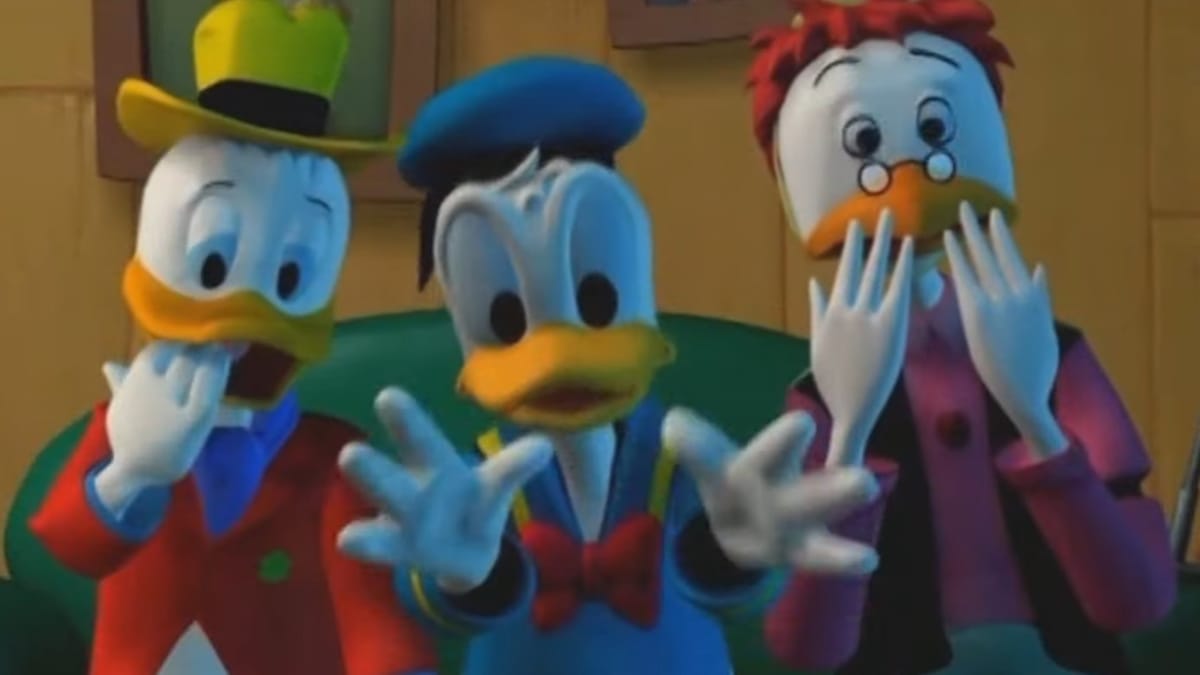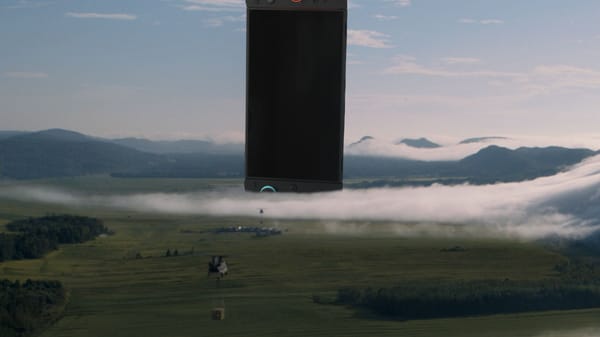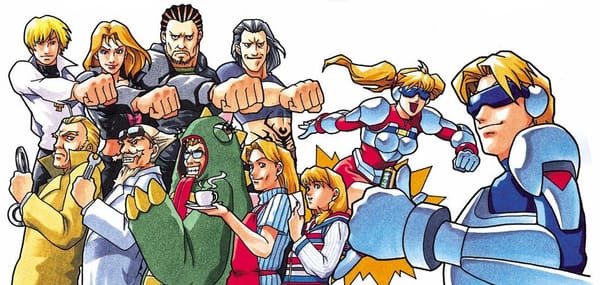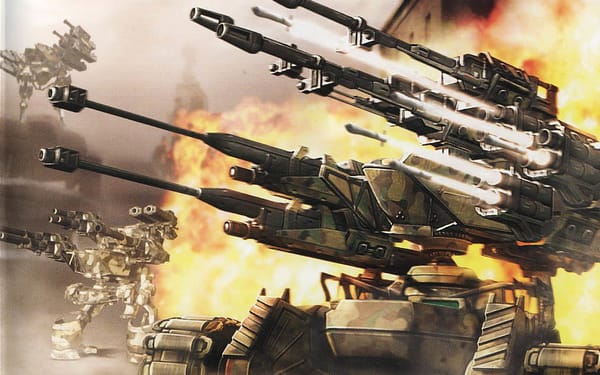The DuckStation interview & Intel's new FPGA plans, analyzed
DuckStation developer Stenzek talks new and upcoming features, while Intel makes moves that could shape the future of MiSTer and hardware emulation.

Hello ROMheads one and all! Has it truly already been two weeks since we gathered for the latest hot emulator news & goss? The calendar tells me yes, but the busiest three month stretch in the history of videogames that I can recall says weren’t we just here? The time flies, but I’ve had fun catching up on the goings on this week and rounding them up as per usual. We’ve got notable news on all fronts, from emulator patches to core updates to new translations.
The piece of news this week that’s likely to have the biggest ramifications for our hobby long-term is Intel changing up its FPGA division — thoughts below on what that might mean for hardware emulation like the MiSTer project a few years down the road.
I’m finally getting some time to play games other than Baldur’s Gate 3 and Cyberpunk 2077 again, and thinking about what to put a little time into in October for Spooky Season. Who has Spooky Season faves? Castlevania is calling to me, especially after the new season of the show on Netflix, but I also have a sick urge to play more of Okage: Shadow King, which was for some reason one of my first test games on the Steam Deck when I was scoping out its emulation capabilities early in 2022. Not actually spooky but spooky-adjacent, which is kinda more fun.
Now then, a quick request before we get on to the business of the week! It’s been six months now since I started Read Only Memo, and I’m thinking about future plans: what should change, what should stay the same, what I should do more and less of as time permits. If you have any feedback you’d like to share — topics that have and haven’t landed for you, whether the issues are too long or too short, and so on. You can leave a comment on this post on my website/the Substack app, or reply to the email if you’re reading this in your inbox.
All feedback is greatly appreciated as I head into the next six months! (And if you turn a friend or two onto the newsletter, I’ll be over the moon, as getting the word out via social media is basically impossible these days).
By the way, I’m going to be at the Portland Retro Gaming Expo next weekend, October 13-15, mostly playing pinball but also likely succumbing to a few retro game pickups and hitting a few talks. If you’ll be there too, make sure these are on your radar:
- The Digital Eclipse Panel w/ Chris Kohler (Sunday 12:15)
- Adventures in Saving Videogame History w/ Frank Cifaldi (Sunday 1:15)
- Finally Emulating the Atari Jaguar w/ Rich Whitehouse (Sunday, 3:15)
I’ll likely be at all three of these. If you spot me, say hi and I’ll hopefully be able to give you a Read Only Memo sticker if, uh, they get shipped to my house in time before I fly up to Portland. Sticker Ninja, don’t fail me now!
The Big Two
1. Intel spinning FPGA development off as a separate business

Nobody panic, but things are changing in the FPGA space in ways that could notably impact the MiSTer and other hobby projects down the road. Intel’s going through some big changes right now in general — listen to this recent Techpod episode for an overview of the company’s new approach to chip design — but here’s the news that matters in emulation land. Intel is sectioning off its Programmable Solutions Group into its own company, “with the long-term goal of eventually selling off part of the group in an IPO in two to three years’ time,” says Anandtech.
What does this mean right this second? Basically nothing — you can still buy the DE10-Nano board used for the MiSTer if you want to build one. What does this mean for FPGA development and sales in two to three years’ time, though? Probably a lot more than nothing.
Here’s a key quote from Anandtech:
“Unlike some of Intel's other divestments, it's notable that the company isn't separating from PSG because the business unit is underperforming or is in a commoditized, low-margin market – rather, Intel thinks PSG could perform even better without the immense business and bureaucratic weight of Intel hanging over it… Intel believes that PSG has been underserving the true high growth, high profitability markets for FPGAs, such as industrial, automotive, defense, and aerospace.”
To go Crystal Ball Mode here for a second, I have a hunch that we’re going to see significantly more and faster FPGA development from Intel (or rather, this new PSG company) at the same time we see an increase in demand and cost for these products. The acceleration of AI development is going to play a part here, too. This page from AMD has a nice overview of some of the use cases for FPGAs outside video games.
The Cyclone V system-on-chip that powers the go-to DE10-Nano MiSTer board is now 11 years old, and was developed by the company Intel bought to form its FPGA division in 2015 and is now spinning back off in 2023 😵. Under Intel the FPGA group was apparently largely focused on datacenter work, so the next couple years could actually be really promising for development that better serves gaming hobby projects. It seems plausible that a much more powerful board could hit mass production and thus be relatively affordable… but it also seems just as possible that they could all be gobbled up by bullshit AI startups and the automotive industry.
Prices on the DE10-Nano have already gone up considerably since the Covid-era chip shortage and stayed up, so I’m skeptical that we’re going to see any hardware in this space get cheaper; it’s just too specialized. But Intel ramping up development and competing more aggressively with AMD could at least net us a new generation of much more powerful hardware for our money. Just imagine the glorious MiSTer cores we may be playing in 2029… 🛸
Mind spreading the word about Read Only Memo? Send somebody a purple link.
2. Stenzek talks PS1 emulator DuckStation’s new update

DuckStation has been mentioned in this newsletter more than a few times, as it’s absolutely the go-to piece of software for PlayStation emulation in 2023. But it hasn’t featured in Patching In, because developer Stenzek has been busy for the last year or so contributing to PCSX2, instead. But whaddya know, a new DuckStation update dropped on Saturday, so I caught up with Stenzek to talk about a few of the notable additions — as well as what’s to come.
The headline features here are support for Reshade shader files and the Retro Achievements client. DuckStation already supported some cool post-processing options — check out my scanlined-up Parasite Eve shots from a few issues back — but full Reshade support will open the door to a lot more customization of how games display in DuckStation using shaders that folks have already built.
“The existing support was fairly limited,” Stenzek told me. “I actually rewrote the entire graphics backend to an abstract interface, kinda like the videocommon stuff I did in Dolphin circa '18/'19, which made adding Reshade much less painful — only had to implement it once instead of 5 times. Also wrote a Metal abstraction on there, since MoltenVK performance can be quite… ehh… and apparently it was hitting bugs.
“There's a few components to Reshade — the shader compiler, the implementation, and the UI, I'm only using the first. So the semantics aren't 100% the same as the full library, and there's still some missing functionality (e.g. multiple render targets), but for the most part it works well. Apart from obviously missing depth support, which is a challenge because the PS1 has no depth buffer 😉.”
DuckStation should now have a Reshade directory for dropping in .fx files. While I imagine a lot of the Reshade profiles made for modern 3D games won’t play well with the PS1, I’m looking forward to seeing what people do with it; maybe this will lead to some really nice CRT shadow masks and such? (DuckStation already has CRT-Royale built-in, though, so we’ll see what full Reshade support really offers!).
In addition to that feature addition and some bugfixes, this update for DuckStation is also setting the stage for some more significant under-the-hood tune-ups when Stenzek can get to them. Specifically, this is what Stenzek had to share about rewriting DuckStation’s compiler, which he called a “risky” update:
“DS was my first ‘proper’ [dynamic recompilation] which I wrote, and thus was full of design flaws. I wanted to add RISC-V support, but given the board I have (VisionFive 2) is fairly slow, I needed faster codegen which wasn't possible with the current [recompiler] design. Unfortunately the performance gap isn't that large, most of the boost comes from handling invalidation/dynamic code better, which applies to both the old and new dynarecs, but it was a fun exercise anyway.
“It's ‘risky’ because the PS1 is full of edge cases and games doing silly things, and making assumptions about behavior can blow up in your face… I rely on automated game testing to catch any regressions, which works fairly well, but is far from comprehensive. So there'll be a decent length gap between this and the next ‘stable’ release for that reason, and PhD commitments.
I was donezo with college after four years and literally cannot imagine working on two emulators while also finishing a PhD, but I guess some of us are born different.
Stenzek gave me a couple hints on other features coming to DuckStation eventually, including built-in netplay sometime after that recompiler is finished, and a “better depth buffer” which would enable some nice graphical bonuses, but isn’t a simple implementation due to the PlayStation 1’s weird Geometry Transformation Engine. Texture replacement will arrive someday, too — despite the relative quiet for the last year or so, there’s still lots more DuckStation in our future.
Patching In

Cemu learns DPI - A nice little bundle of updates from Cemu recently, including making the Windows version “DPI-aware” so that it plays nicely with Windows’ built-in scaling. This was mostly problematic for folks with 4K monitors who’d see their games get a lil’ blurry at, say, 150% scaling. Fixed now. Couple more updates:
A Vulkan CPU profiler, not important to users, but could aid performance optimization
Support for game dumps in another format, WUP
Yuzu & Amiibo, sittin’ in a tree - The emulator can now bring up the Amiibo manager via the Tools menu to “register, rename, delete, and restore” Amiibo data. That’s not the only Switch “applet” Yuzu now supports: the devs have recently added the Mii editor and now the Album, too. Some recent Yuzu fixes, too:
Shadow rendering in Metroid Prime Remastered
Lens flare in Luigi’s Mansion 3
“Glow particles” in Xenoblade 2/3, with high GPU accuracy
Lighting in Pikmin 4 caves
BigPEmu gets analogous - Just a quick note after its recent featuring in a previous ROM, but another neat addition to this Jaguar emulator: Rich made a video showing the process of adding analog movement support to the game Iron Soldier. It’s a real peek behind the curtain. I’m hoping in a future ROM to go in-depth on Rich’s addition of networked multiplayer to Alien vs Predator, because it’s a wild feat.
Core Report

MAME .259 - The monthly MAME update has the usual mix of esoteric very retro hardware emulation advancement alongside arcade stuff. Some of the hardcore nitty gritty first:
“MAME now has support for hard-sectored floppy formats, which were a thing back in the days of big 8" drives”
“The poorly-received TIB Disc Drive DD-001 that attached to the Commodore 64’s cartridge port is now emulated”
New working software item: “Doctor Bingo Bear”
I immediately looked up Doctor Bingo Bear and was not disappointed. Here’s the headliner for me in the latest MAME update though: “Emulation of Namco System 12 games using the CDXA board and CD-ROM storage: Truck Kyosokyoku and the interesting but unsuccessful Um Jammer Lammy NOW!”
One of my best friends in high school loved Um Jammer Lammy and as a result I’ve always had a fondness for the Parappa spinoff even though music games aren’t really my thing. Really cool to see this obscure arcade adaptation fully playable via emulation.
Nintendo Sixty Coooore - Developer Robert Peip keeps slotting in more and more graphics features for the MiSTer N64 core, including gamma correction, dithering, and bilinear scaling. Progress…
Translation Station

Chocobo in Englishland - 1999’s PlayStation board game Dice de Chocobo, released only in Japan, got a port to the Game Boy Advance in 2002, which also remained stuck in its homeland. Until now! Chocobo Land: A Game of Dice just popped up on Romhacking.net with a completed fan translation. This port added quite a bit to the original game and is a bit like the Itadaki Street series (aka Mario Party with stock trading).
In what is certainly going to be a trend in fan translations going forward, Chocobo Land was completed “with AI assistance” and is a first-time effort from translator Nezz. I’m pretty skeptical of the quality of machine translation, but considering the massive amount of thankless work that goes into any fan translation, I can’t be too mad at it. And Nezz picked the right kind of game to use AI assistance on: Chocobo Land is a board game, without much text outside of menus. There’s a touch of rudimentary story, and that’s about it.
The English seems perfectly passable in this video, and a review on Romhacking.net agrees, saying “Don’t let ‘machine assisted’ scare you off.”
Ultima Underworld, but for PSX - I’ve got a special kinda love for programmers who dedicate themselves to translating unique versions of games that are already playable in English, like the Sega Saturn version of Baroque featured in an earlier ROM. Now we’ve got Ultima Underworld, the 1997 Japan-only port of the 1992 DOS game! Why would you play this version? Fullscreen 3D is probably the big one, but there’s also the anime-style portraits and awkward gamepad controls for what was meant to be a PC game.
The text is pulled from the original DOS release, but romhacker Gertius details some changes that were required to make it work in this version:
“For the most part, it was possible to transfer the text contents largely unchanged from the English version. However, some strings had to be adapted for size reasons, either for ROMsize, or display size (Japanese strings are usually much shorter than English strings). Most prominently, the Avatar’s replies in NPC conversiations have only 5 static lines with much fewer characters than in the PC version. That is why the Avatar’s replies had to be edited down quite severely. Dynamic strings were often altered, because the sentence construction/word order works differently in Japanese, and it had to be adapted for that.”
Temptation Town - Ooh la la, what’s this — an FM Towns eroge visual novel, with the hacking done by Dreamcast pro Derek Pascarella (previously interviewed in ROM!). Hit the link for the Github page, which includes FM Towns emulation advice, and here’s a pretty SFW trailer featuring several very ‘90s anime ladies.
Good pixels

Let’s take a slight detour this week away from emulation screenshots to the land of original hardware run through top-of-the-line FPGA-based upscaling with… the Retrotink 4K! I’m a happy Retrotink 5X owner and jealous of the capabilities of the new 4K box, which isn’t for sale yet but is being put through its paces by a bunch of retro scene folks. The picture quality you can get from the Retrotink devices is fantastic even before you get into fine tuning, and the Tink 4K is going to allow for intense degrees of fine tuning.
Here are some showcases from Wobbling Pixels, who works magic to put together perfect profiles for upscaling different consoles.
This tweet and this tweet have more details on the above.
And finally, a couple from Pro Pixels:



